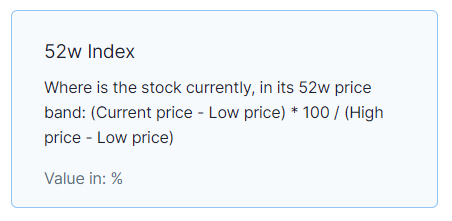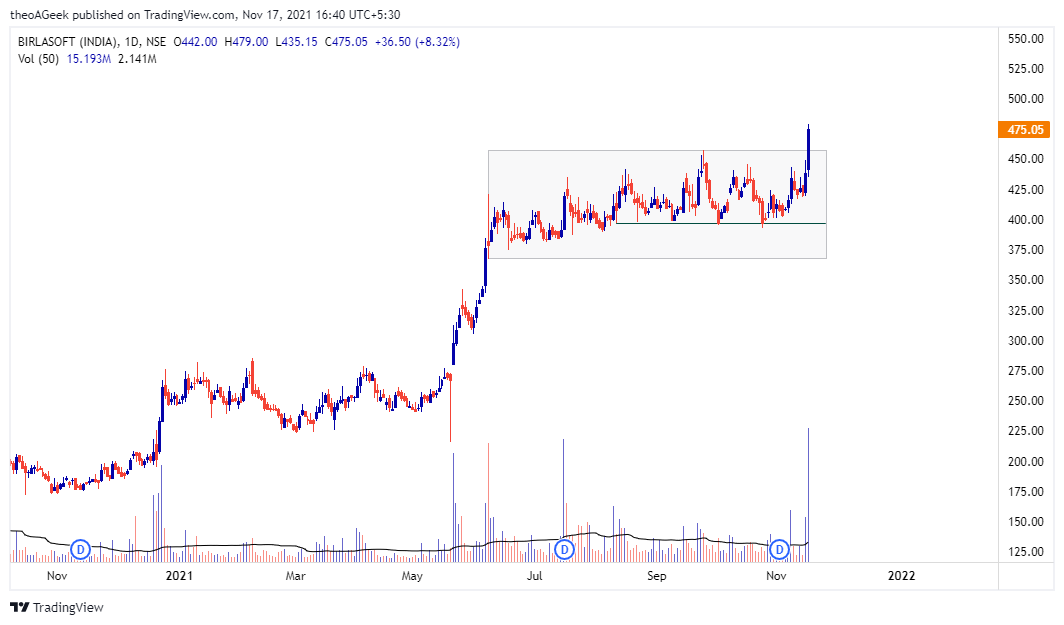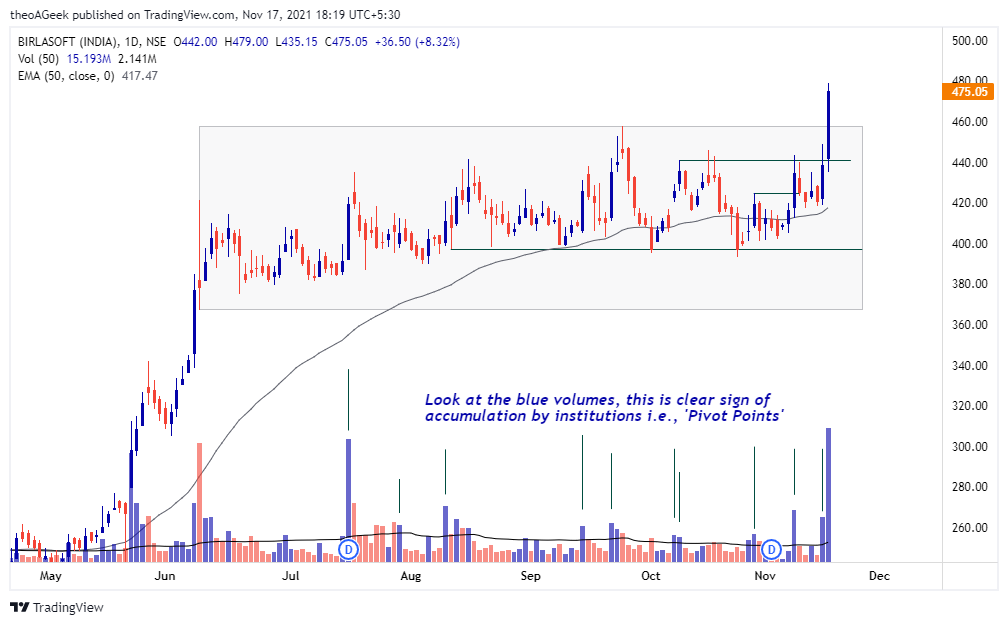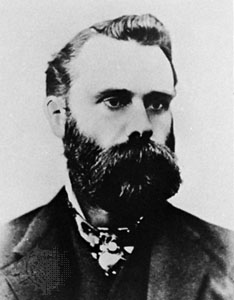
𝐓𝐡𝐞 𝟓𝟐-𝐖𝐞𝐞𝐤 𝐈𝐧𝐝𝐞𝐱 𝐒𝐜𝐚𝐧𝐧𝐞𝐫 📊
A THREAD 🧵
Please Like & RT this if you find value 🙏
The 52-week index filter on @screener_in is one of the most effective ways to filter out stocks for #equity segment.
Here's how it can help you 👇
A THREAD 🧵
Please Like & RT this if you find value 🙏
The 52-week index filter on @screener_in is one of the most effective ways to filter out stocks for #equity segment.
Here's how it can help you 👇
1/ The 52-week index is simply a stock in its 52-week band.
The formula is:
(𝘊𝘶𝘳𝘳𝘦𝘯𝘵 𝘱𝘳𝘪𝘤𝘦 - 𝘓𝘰𝘸 𝘱𝘳𝘪𝘤𝘦) * 100 / (𝘏𝘪𝘨𝘩 𝘱𝘳𝘪𝘤𝘦 - 𝘓𝘰𝘸 𝘱𝘳𝘪𝘤𝘦)
𝗩𝗮𝗹𝘂𝗲 𝗶𝗻 %
The formula is:
(𝘊𝘶𝘳𝘳𝘦𝘯𝘵 𝘱𝘳𝘪𝘤𝘦 - 𝘓𝘰𝘸 𝘱𝘳𝘪𝘤𝘦) * 100 / (𝘏𝘪𝘨𝘩 𝘱𝘳𝘪𝘤𝘦 - 𝘓𝘰𝘸 𝘱𝘳𝘪𝘤𝘦)
𝗩𝗮𝗹𝘂𝗲 𝗶𝗻 %

2/ Now you may ask what is the 𝟱𝟮-𝘄𝗲𝗲𝗸 𝗯𝗮𝗻𝗱?
Lets understand this with an example -
Take this example of #Birlasoft.
Current Price= ₹531
52-Week High= ₹538
52-Low= ₹216
So, its 𝟱𝟮-𝘄𝗲𝗲𝗸 𝗯𝗮𝗻𝗱 comes at -
= (531-216)/(538-216)*100
= 97.5%
Lets understand this with an example -
Take this example of #Birlasoft.
Current Price= ₹531
52-Week High= ₹538
52-Low= ₹216
So, its 𝟱𝟮-𝘄𝗲𝗲𝗸 𝗯𝗮𝗻𝗱 comes at -
= (531-216)/(538-216)*100
= 97.5%

3/ What does this mean?
Basically, we want to look at stocks that are in the top half of their 52-week band (the highlighted area in the diagram) or within 75% of its 𝟱𝟮-𝘄𝗲𝗲𝗸 𝗯𝗮𝗻𝗱.
Basically, we want to look at stocks that are in the top half of their 52-week band (the highlighted area in the diagram) or within 75% of its 𝟱𝟮-𝘄𝗲𝗲𝗸 𝗯𝗮𝗻𝗱.

4/ The main reason we want to select these stocks are because we want stocks wherein the demand is more than its supply.
A stock within its 52-week band means that buyers are still activated here. This simply shortens our filtering process.
A stock within its 52-week band means that buyers are still activated here. This simply shortens our filtering process.
6/ This isn't perfect but it gives you with around 200 names during the weekend, you have to go through them manually and trade stocks that are outperforming the broader #NIFTY500 and breaking out of sound technical structures.
7/ The best thing about this is that it gives us stocks to trade that are structurally quite good (HH-HL).
ᴛʜᴀɴᴋ ʏᴏᴜ!♥️
𝐑𝐞𝐭𝐰𝐞𝐞𝐭 𝐭𝐡𝐞 𝐟𝐢𝐫𝐬𝐭 𝐭𝐰𝐞𝐞𝐭 𝐢𝐧 𝐭𝐡𝐢𝐬 𝐭𝐡𝐫𝐞𝐚𝐝 𝐟𝐨𝐫 𝐛𝐞𝐭𝐭𝐞𝐫 𝐫𝐞𝐚𝐜𝐡. ✊
ᴛʜᴀɴᴋ ʏᴏᴜ!♥️
𝐑𝐞𝐭𝐰𝐞𝐞𝐭 𝐭𝐡𝐞 𝐟𝐢𝐫𝐬𝐭 𝐭𝐰𝐞𝐞𝐭 𝐢𝐧 𝐭𝐡𝐢𝐬 𝐭𝐡𝐫𝐞𝐚𝐝 𝐟𝐨𝐫 𝐛𝐞𝐭𝐭𝐞𝐫 𝐫𝐞𝐚𝐜𝐡. ✊
• • •
Missing some Tweet in this thread? You can try to
force a refresh











